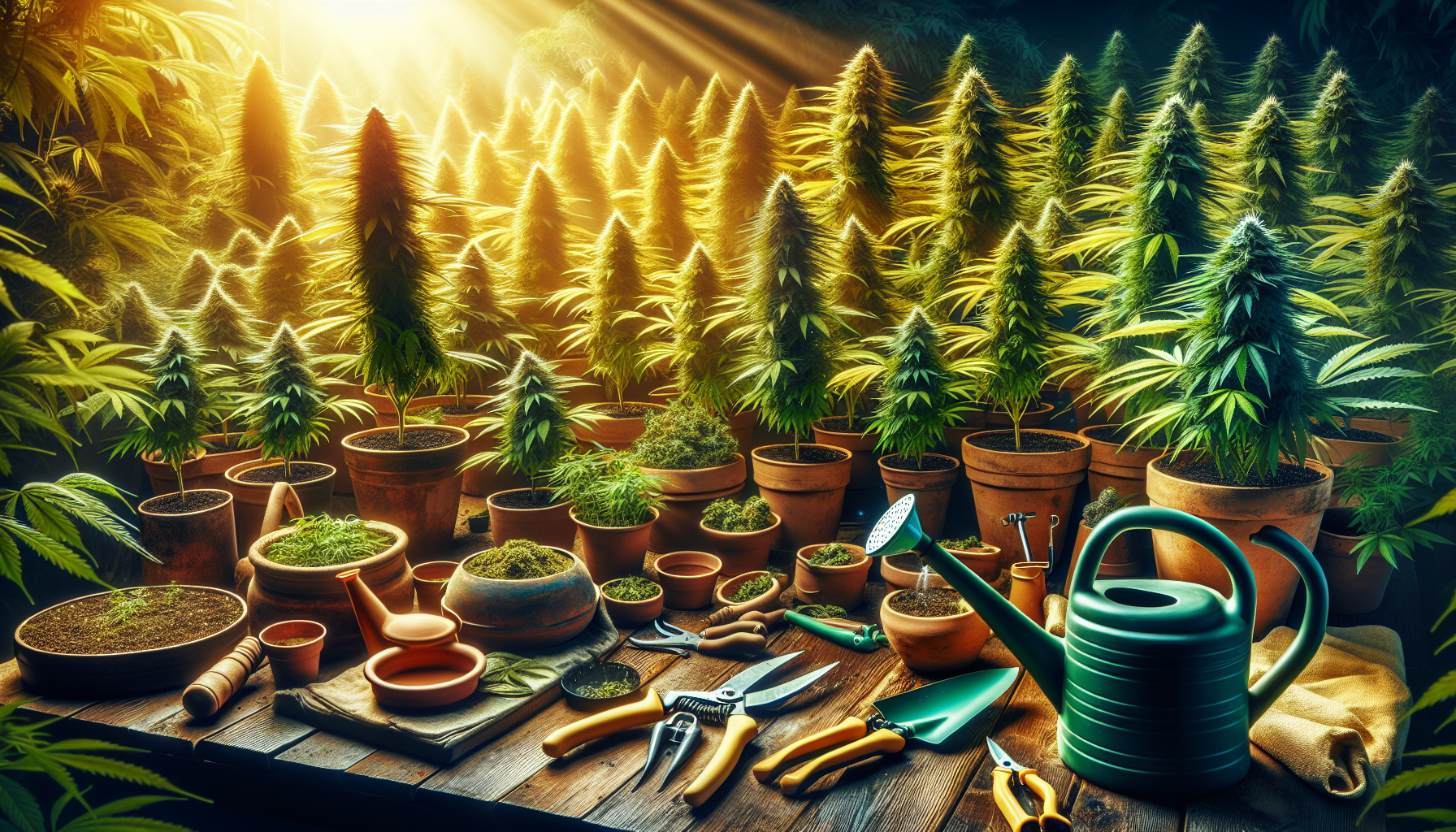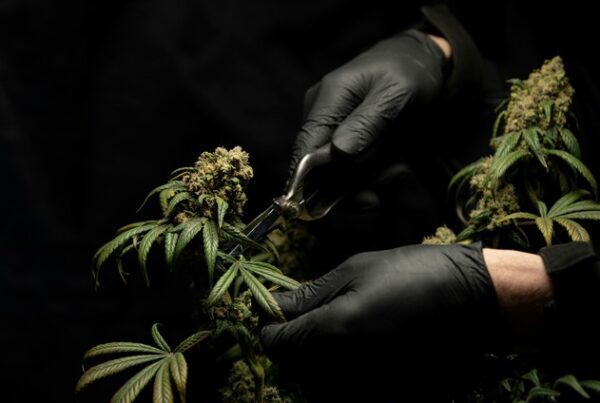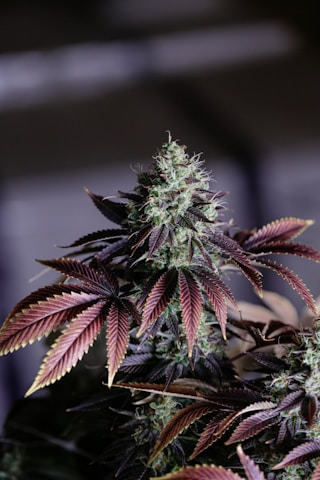Introduction

Growing cannabis at home offers numerous benefits, including cost savings, control over the growing process, and access to diverse strains. Homegrown cannabis allows for an unparalleled level of customization, ensuring plants are nurtured to maximize their potential. However, it is crucial to adhere to local laws and regulations when cultivating cannabis to ensure a safe and legal growing experience.
Choosing the Right Cannabis Seeds
The success of your homegrown cannabis largely depends on the quality of seeds you choose to plant. High-quality seeds result in healthy plants, which in turn produce potent and flavorful buds. It is crucial to invest in premium cannabis seeds from a reputable source like Original Johnny Seed Bank.
Original Johnny Seed Bank offers a wide selection of cannabis strains to cater to different preferences and needs. Their diverse range includes hybrid, indica, and sativa seeds, ensuring that you can find the perfect strain for your home growing journey. By providing detailed information about each strain’s origin, effects, appearance, and THC content, Original Johnny Seed Bank enables you to make an informed decision when selecting seeds.
Legal compliance is another important factor to consider when choosing cannabis seeds. Ensure that you select seeds compliant with the 2018 Farm Bill, which states that cannabis seeds must contain less than 0.2% THC. Original Johnny Seed Bank adheres to these legal requirements, allowing you to grow cannabis with peace of mind.
The Basics of Male and Female Cannabis Plants
Understanding the differences between male and female cannabis plants is crucial to successful homegrown cannabis cultivation. Each type of plant has unique characteristics, and selecting the right plants is essential to achieving the desired results.
Male cannabis plants produce pollen and lack the cannabinoid-rich flowers that are the primary goal of most growers. These plants are typically removed from the grow area to prevent pollination, which would result in lower-quality, seed-filled flowers.
On the other hand, female cannabis plants are the ones that produce the resinous buds desired by most cultivators. By keeping female plants away from males and preventing pollination, growers can ensure that their plants produce large, potent, and seedless flowers.
Besides male and female plants, growers should also be familiar with hermaphrodite cannabis plants. These plants contain both male and female reproductive organs and can self-pollinate, leading to lower-quality flowers filled with seeds. Hermaphroditic plants can arise due to genetics or environmental stress, so it’s crucial to identify and remove them from the grow area to maintain the quality of your harvest.
In summary, selecting the right plants for cultivation is an essential step in homegrown cannabis production. By understanding the differences between male, female, and hermaphrodite plants, growers can ensure that they are cultivating the highest quality cannabis flowers possible.
IV. Methods of Growing Cannabis
When it comes to growing cannabis at home, there are two primary methods to choose from: growing plants from seeds and growing plants by cloning. Each method has its advantages and drawbacks, and the best choice depends on your personal preferences and circumstances.
A. Growing Plants from Seeds
Growing cannabis plants from seeds is a traditional and widely used method. Starting with high-quality seeds, like those offered by Original Johnny Seed Bank, is essential for successful cultivation. When you grow cannabis from seeds, you have the opportunity to choose from a diverse range of strains, each with unique characteristics such as flavor profiles, growth patterns, and effects. Additionally, growing from seeds allows for the possibility of creating new and interesting hybrid strains by crossbreeding plants.
B. Growing Plants by Cloning
Cloning is another popular method for growing cannabis, which involves taking cuttings from a mature “mother” plant and rooting them to create genetically identical plants. This method allows for the rapid propagation of a particular strain and ensures consistency in plant characteristics, such as flavor, potency, and growth patterns. However, cloning can be more challenging than growing from seeds, as it requires specific knowledge and skills to successfully root and establish the clones.
C. Organic Cultivation Practices Used by Original Johnny Seed Bank
Regardless of the method you choose, it is essential to follow organic cultivation practices to ensure a pure and authentic growing experience. Original Johnny Seed Bank is committed to providing seeds that are grown in natural conditions without the use of harmful chemicals. By following organic cultivation methods, you can grow cannabis plants that are healthier, more environmentally friendly, and produce a higher-quality end product.
Growth Mediums for Cannabis Cultivation
When cultivating homegrown cannabis, one of the most crucial decisions you need to make is choosing the right growth medium. There are two popular methods: growing in soil and growing with hydroponics. Each method has its pros and cons, and understanding the differences will help you determine the best approach for your cannabis cultivation journey.
Growing in Soil
Soil is the traditional and most common growth medium for cannabis cultivation. It is a natural and forgiving medium, providing essential nutrients and a stable environment for the plants to grow. When using soil, it’s crucial to select high-quality organic soil or mix your soil with amendments like compost and worm castings to improve its nutrient content and drainage.
One of the main advantages of growing in soil is its simplicity, making it an excellent choice for beginners. Soil acts as a natural buffer, reducing the chances of overfeeding or overwatering your plants. Additionally, many growers believe that soil-grown cannabis has a richer, more complex flavor profile due to the presence of various microorganisms and organic matter in the soil.
Growing with Hydroponics
Hydroponics is a soil-less method of cannabis cultivation where plants grow in a nutrient-rich water solution. This system offers precise control over nutrient levels and pH, allowing for optimal plant growth and potentially higher yields. Hydroponics can be more complicated than soil-based methods, requiring specialized equipment and a deeper understanding of plant nutrition.
Despite the initial complexity, hydroponics offers several advantages, including faster growth rates, increased yields, and fewer issues with pests and diseases. It’s also a more environmentally friendly option, as it uses less water and eliminates the need for soil-based fertilizers and pesticides.
Comparing the Pros and Cons of Each Method
Both soil and hydroponics have their merits, and the best method for your homegrown cannabis cultivation ultimately depends on your individual needs and preferences. If you’re a beginner or prefer a more natural approach, soil may be the better choice for you. On the other hand, if you have some experience and are seeking higher yields and more precise control over your plants’ growth, hydroponics may be the way to go.
Regardless of the method you choose, the key to successful cannabis cultivation is understanding the specific requirements of your chosen growth medium and ensuring your plants receive the proper care and nutrients they need to thrive.
Understanding the Cannabis Life Cycle
When growing homegrown cannabis, it is essential to have a thorough understanding of the plant’s life cycle. This knowledge will enable you to care for your plants more effectively and ultimately yield a more successful harvest.
Stages of Cannabis Plant Growth
There are four primary stages in the cannabis plant’s life cycle: germination, vegetative, flowering, and harvest. Germination is the initial stage where seeds sprout and develop their first set of leaves. The vegetative stage follows, where the plant focuses on growing larger and stronger. During the flowering stage, plants begin to produce buds, and the final stage is the harvest, where growers can collect the fruits of their labor.
Timing of Plant Care Tasks
Proper timing is crucial when caring for your cannabis plants. During the vegetative stage, plants require ample light, water, and nutrients to support their rapid growth. As the plant transitions into the flowering stage, it is essential to adjust light schedules and nutrients to encourage bud production. Monitoring your plants closely and making adjustments based on their needs is critical for a successful cannabis grow.
Harvesting and Curing the Final Product
Knowing when to harvest your cannabis plants is essential for maximizing potency and yield. Harvesting too early can result in underdeveloped buds, while waiting too long can lead to a decline in potency. Observe the trichomes, or tiny resin glands on the buds, for signs of maturity. When most trichomes have turned milky-white with a few turning amber, it is typically the ideal time to harvest.
After harvesting, the curing process begins. Properly curing your cannabis can enhance the flavor, aroma, and overall quality of the final product. To cure, trim away excess leaves and hang the buds to dry in a cool, dark, and well-ventilated area. Once the buds are dry, store them in airtight containers and “burp” them daily to release excess moisture. This curing process should take around two to four weeks for optimal results.
Understanding the cannabis life cycle and providing the appropriate care at each stage is key to a successful homegrown cannabis harvest. With knowledge and patience, you can enjoy the benefits of your own homegrown cannabis.
Choosing the Right Nutrients
Proper nutrition is essential for the growth and development of cannabis plants. Just like any other living organism, cannabis plants require essential nutrients to thrive. These nutrients play a crucial role in their overall health, growth, and yield. In this section, we will discuss the essential nutrients for cannabis plants, the advantages and disadvantages of synthetic and organic nutrients, and how to adjust nutrient levels for different growth stages.
Essential Nutrients for Cannabis Plants
Cannabis plants require three primary macronutrients: Nitrogen (N), Phosphorus (P), and Potassium (K). These elements are vital for the plant’s growth, flowering, and overall health. In addition to the primary macronutrients, cannabis plants also need secondary nutrients such as Calcium (Ca), Magnesium (Mg), and Sulfur (S), as well as trace amounts of micronutrients like Iron (Fe), Manganese (Mn), Zinc (Zn), Copper (Cu), Boron (B), and Molybdenum (Mo).
Synthetic vs. Organic Nutrients
There are two main types of nutrients available for cannabis cultivation: synthetic and organic. Synthetic nutrients are chemically formulated and provide a precise balance of essential elements. They are highly soluble and easily absorbed by the plant’s roots, allowing for rapid growth and quick results. However, synthetic nutrients can build up in the soil, leading to nutrient lockout and potential harm to the plant.
Organic nutrients, on the other hand, are derived from natural sources such as compost, worm castings, and bat guano. They provide a slow-release of nutrients that foster healthy microbial life in the soil, promoting a more natural and sustainable growing environment. Organic nutrients can enhance the flavor and aroma of the final product, but they may take longer to show results and can be more challenging to manage in terms of nutrient levels.
Adjusting Nutrient Levels for Different Growth Stages
As cannabis plants progress through their life cycle, their nutrient requirements change. During the vegetative stage, plants require higher levels of nitrogen to support rapid growth and development. As they transition into the flowering stage, the need for phosphorus and potassium increases to promote bud formation and overall plant health. To ensure optimal growth, it is crucial to adjust nutrient levels according to the plant’s specific needs at each stage.
In conclusion, providing the right nutrients to your cannabis plants is essential for their overall health and growth. By understanding the importance of essential nutrients, weighing the pros and cons of synthetic and organic options, and adjusting nutrient levels for different growth stages, you can ensure a successful and bountiful harvest of homegrown cannabis.
Optimal Growing Conditions for Homegrown Cannabis
Creating the ideal environment for your homegrown cannabis plants is crucial in ensuring their growth and overall health. By focusing on lighting requirements, temperature and humidity control, and proper air circulation, you can optimize the conditions for successful cannabis cultivation.
Lighting Requirements
Light plays a significant role in the growth of cannabis plants. They require a specific light spectrum and intensity to thrive. During the vegetative stage, cannabis plants need a spectrum rich in blue light, while the flowering stage demands a red-heavy spectrum. Make sure to provide your plants with adequate lighting using high-quality LED, HID, or fluorescent grow lights, and adjust the light cycle depending on the growth stage. In general, 18 hours of light and 6 hours of darkness are recommended for the vegetative stage, while the flowering stage requires 12 hours of light and 12 hours of darkness.
Temperature and Humidity Control
Maintaining optimal temperature and humidity levels is essential in creating a thriving environment for your cannabis plants. A temperature range of 70-85°F (21-29°C) during the vegetative stage and 65-80°F (18-26°C) during the flowering stage is ideal for most strains. Humidity levels should be kept between 40-70% for the vegetative stage, gradually reducing it to 40-50% during the flowering stage. Investing in a high-quality thermometer and hygrometer will help you monitor and maintain these conditions effectively.
Proper Air Circulation
Good air circulation is vital for the health of your cannabis plants. It helps regulate temperature and humidity, prevents the growth of mold and pests, and strengthens the plants’ stems. To ensure proper air circulation, use oscillating fans and maintain a gentle breeze within the grow space. Moreover, it’s important to provide fresh air by installing an exhaust system and a carbon filter to remove any unwanted odors. This will create a clean and healthy environment for your homegrown cannabis plants to flourish.
In conclusion, by paying close attention to your plants’ lighting, temperature, humidity, and air circulation needs, you can create the optimal growing conditions for your homegrown cannabis. These factors play a crucial role in the overall health and yield of your plants, making them an important aspect of successful cannabis cultivation.
IX. Pest and Disease Control
Pests and diseases can significantly impact the health of your homegrown cannabis plants, making it essential to be proactive in their management. In this section, we will cover the identification of common pests and diseases, preventive measures to protect your plants, and the various treatment options available.
Identifying Common Pests and Diseases
When growing cannabis at home, it is crucial to keep an eye out for common pests such as spider mites, aphids, and whiteflies. These pests can damage your plants by feeding on the leaves and sap, while also spreading diseases. Some common diseases that can affect cannabis plants include powdery mildew, root rot, and various types of mold. Regularly inspecting your plants and being aware of the signs of these pests and diseases can help you take prompt action to mitigate their impact.
Preventative Measures to Protect Plants
Taking preventive measures can go a long way in protecting your cannabis plants from pests and diseases. Some helpful tips include maintaining a clean and organized growing environment, ensuring proper ventilation and air circulation, and using pest-resistant strains. In addition, practicing crop rotation and companion planting can help reduce the risk of pests and diseases, as can the proper management of temperature and humidity levels.
Organic and Chemical Treatment Options
If your plants become affected by pests or diseases, you have various treatment options available to you. Organic treatments, such as introducing beneficial insects like ladybugs and predatory mites, can help keep pest populations in check. Similarly, using natural products like neem oil and diatomaceous earth can be effective in controlling pests without introducing harmful chemicals into your growing environment.
In cases where organic treatments are not effective, chemical pesticides and fungicides may be necessary. However, it is essential to carefully research and follow the instructions for these products, as they can have negative effects on your plants and the environment if used improperly. It’s also important to consider the potential impact of these chemicals on the final product, ensuring that you’re providing a safe and high-quality homegrown cannabis experience.
In conclusion, pest and disease management is a vital aspect of growing cannabis at home. By staying vigilant and proactive, you can protect your plants and ensure a successful harvest.
Unique Sensory Experiences
One of the most enjoyable aspects of homegrown cannabis is the opportunity to explore different strains, each offering unique flavors and effects. Whether you’re interested in a relaxing indica, an uplifting sativa, or a balanced hybrid, you can find a wide variety of strains to cater to your preferences. By growing your cannabis at home, you have the freedom to experiment with diverse strains, finding the perfect match for your desired effects.
Original Johnny Seed Bank offers an impressive selection of cannabis strains, each with robust growth characteristics. Their seeds are carefully cultivated to provide the highest quality plants with distinctive flavor profiles and potent effects. As you explore the vast range of options available, you can appreciate the unique sensory experiences each strain offers.
When growing cannabis at home, it’s essential to understand how different strains may affect you and to pair them with your desired effects. For example, if you’re looking for a strain that will help you relax and unwind after a long day, an indica-dominant strain may be an ideal choice. Conversely, a sativa-dominant strain might be better suited for daytime use, providing an uplifting and energizing experience. By familiarizing yourself with the characteristics of each strain, you can make informed decisions about which seeds to cultivate and enjoy the diverse and unique sensory experiences that homegrown cannabis offers.
Expertise and Support
When cultivating homegrown cannabis, the value of support from experienced growers cannot be overstated. Having access to expert advice can make the difference between a successful harvest and a disappointing outcome. Original Johnny Seed Bank, a reputable source for cannabis seeds, is committed to assisting customers throughout their growing journey.
Understanding the importance of guidance in the cultivation process, Original Johnny Seed Bank offers a wealth of knowledge and expertise to its customers. This support helps growers navigate the various stages of cannabis plant growth, from germination to harvest, ensuring they achieve the best results possible.
If you have any inquiries or need support during your homegrown cannabis cultivation experience, do not hesitate to reach out to Original Johnny Seed Bank. Their team of professionals is ready to provide assistance and address any concerns you may have, ensuring your growing endeavor is a success.
Responsible Use of Homegrown Cannabis
As you embark on your journey of growing and consuming homegrown cannabis, it is crucial to emphasize the importance of using these products responsibly. Cannabis affects everyone differently, and it is essential to understand your personal limits and the potential effects of each strain you consume.
Before using any cannabis product, whether homegrown or purchased, it is advisable to consult with a physician, especially if you have any pre-existing medical conditions or are taking medications. A healthcare professional can provide guidance on the appropriate usage and any potential interactions to ensure your well-being.
Lastly, storing your homegrown cannabis safely and securely is an important aspect of responsible use. Proper storage not only preserves the quality and potency of your cannabis but also prevents unauthorized access by children, pets, or anyone who should not be using it. Invest in airtight containers, store them in a cool, dark place, and consider using a lockbox or a designated storage area to keep your cannabis safe and secure.
XIII. Monthly Giveaways and Discounts
Original Johnny Seed Bank takes pride in not only providing high-quality seeds and strains but also in engaging with its customers through exciting opportunities. One such initiative is their monthly giveaways, which offer customers the chance to win seeds and other cannabis-related products. By participating in these giveaways, customers can explore new strains and expand their homegrown cannabis garden.
Entering the monthly giveaways is simple and straightforward. Customers can visit the Original Johnny Seed Bank website and follow the instructions for participation. These giveaways are a great way for customers to engage with the brand, learn more about different strains, and potentially win seeds that they might not have otherwise tried. Moreover, participating in the giveaways also keeps customers informed about the latest discounts and promotions, ensuring they receive the best value for their purchases.
In conclusion, the ultimate guide to homegrown cannabis covers various aspects of cannabis cultivation, from selecting high-quality seeds to understanding the plant’s life cycle and creating optimal growing conditions. By following the tips and tricks provided in this guide and choosing seeds from a reputable source like Original Johnny Seed Bank, customers can grow their own cannabis plants successfully and enjoy the unique sensory experiences that come with it.
Grow Your Own Adventure
Throughout this guide, we’ve explored the numerous benefits of homegrown cannabis and shared valuable tips for cultivating your own plants. By selecting high-quality seeds, adhering to legal requirements, and leveraging the expertise and support provided by Original Johnny Seed Bank, you can confidently grow cannabis at home and enjoy unique sensory experiences. Embrace your green thumb and shop for premium cannabis seeds to embark on a fulfilling and rewarding homegrown cannabis journey.










